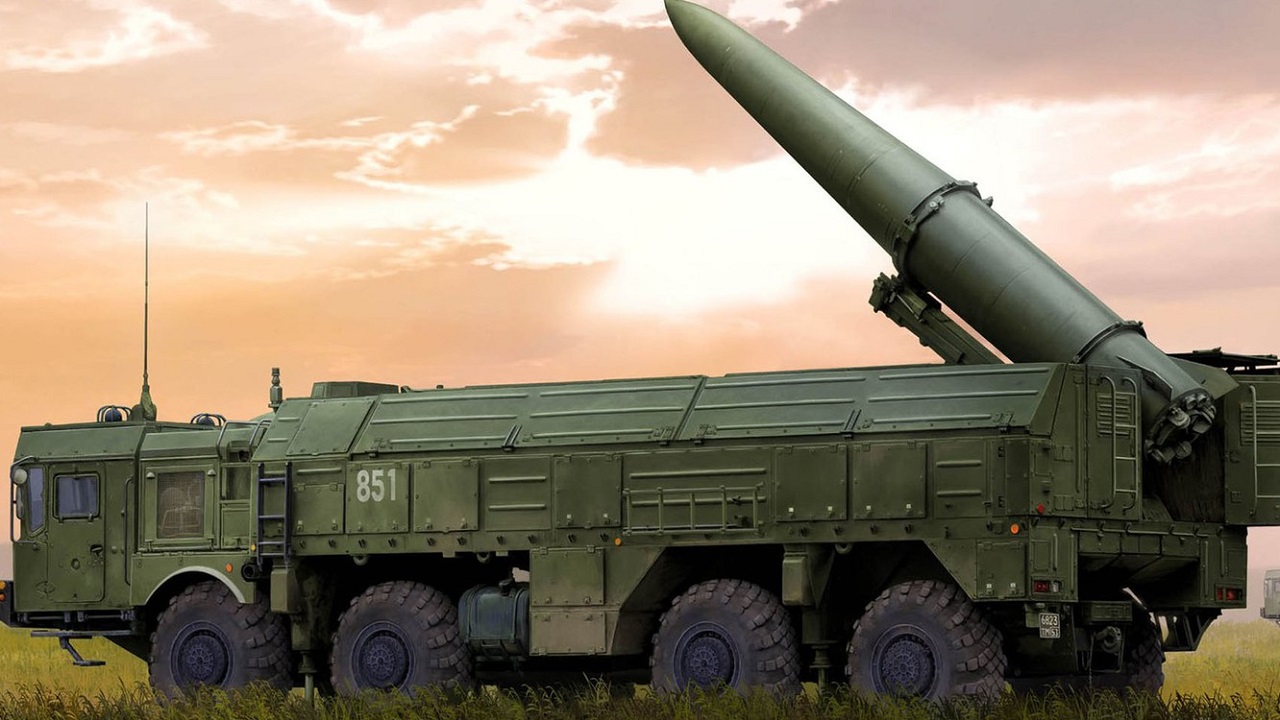As the inheritor of the Soviet Union’s nuclear legacy, Russia is one of the most experienced states in the world when it comes to nuclear arms control. With the largest arsenal in the world, Russia’s participation (or non-participation) in nuclear arms agreements has ramifications for the security and stability of the entire world. While recent nuclear saber-rattling by Russia throughout its 2022 invasion of Ukraine continues to draw attention to Russia’s nuclear arsenal, much less attention has been afforded to the bilateral nuclear arms control architecture, which Russia shares with the United States.
What does Russia’s Nuclear Arsenal Look Like?
Russia’s nuclear arsenal is the largest in the world, with 2,565 operational strategic warheads as of March 2022, according to the Bulletin of the Atomic Scientist’s 2022 Nuclear Notebook estimate.
In addition to its large number of operational warheads, Russia is estimated to have 1,588 warheads actually deployed at any given time, the bulk of which are deployed to intercontinental ballistic missiles (ICBM). The rest are split between submarine-launched ballistic missiles and Russia’s fleet of bombers capable of launching nuclear-capable cruise missiles and bombs. Although some questions exist about the true reliability of such systems based on the scattered performance and high rate of failure of conventional Russian missiles in Ukraine, the scale of Russia’s nuclear arsenal ensures that questions of arms control remain relevant.
What is the State of Nuclear Arms Control with Russia Today?
Today, bilateral oversight between Russia and the United States over their nuclear arsenals is at a multi-decade low, at a moment when Russia appears to be pioneering novel nuclear delivery systems.
The final remaining agreement, which binds both the United States and Russia, is the New Strategic Arms Reduction Treaty (New START), which was originally negotiated and ratified during the Presidencies of Barack Obama and Dmitri Medvedev in 2010. According to the terms of the treaty, the United States and Russia were obligated to bring their nuclear arsenals under a limit of 1,550 deployed nuclear weapons by February 5, 2018, as well as abide by similar limitations on nuclear-capable ICBMs, submarine-launched ballistic missiles (SLBM), and bombers.
At that time, both Moscow and Washington were bound by the Intermediate-Range Nuclear Forces Treaty, a treaty first agreed by U.S. President Ronald Reagan and General Secretary Mikhail Gorbachev of the Soviet Union. The agreement forbade either power from owning or operating ground-launched ballistic or cruise missiles with ranges between 500 to 5,500 kilometers. However, in 2019, the Trump administration decided to withdraw from the treaty on the grounds of Russian violations of its terms. In particular, the U.S. had previously expressed concerns that the Russian deployment of Iskander-K missile systems with nuclear-capable 9M729 ground-launched cruise missiles constituted a violation of the treaty’s terms.
Some count the Bush administration’s decision to withdraw from the Anti-Ballistic Missile Treaty in 2001 as one of the earliest moments of unraveling of the bilateral United States-Russia nuclear relationship. Despite Bush’s public assurances that the American withdrawal was intended to better equip America to defend against attacks by rogue states and terrorists, Russia kicked off years of weapons development to circumvent actual or foreseen U.S. missile defenses.
President Putin’s 2018 announcement of Russia’s development of a variety of novel delivery systems was an unmistakable sign that Russia’s view of the bilateral strategic arms relationship had changed. In particular, Putin feted the development of the Kh-47M2 Kinzhal ballistic missile, RS-28 Sarmat ICBM, Avangard hypersonic glide vehicle, Burevestnik nuclear-powered cruise missile, and Poseidon nuclear torpedo as invulnerable new tools in Russia’s arsenal, even if many have not yet approached serial production or wide-scale deployment.
Where Could Things Go from Here?
Putin’s early threats that any third country which intervenes in Russia’s invasion of Ukraine will meet a “lightning fast” response is at least in part an allusion to Moscow’s nuclear arsenal. While such threats are arguably a key element of Russia’s nuclear doctrine, the risk of actual Russian employment of nuclear weapons in the context of its war in Ukraine remains present, even if slim. The attention of Western intelligence and policymaking leaders to the persistent threat of Russian nuclear weapon use (particularly tactical nuclear weapons) highlights the gaps in arms control architecture which covers the arsenals of Russia and the United States.
With New START having been barely extended until 2026, the foundation of bilateral arms control between the United States and Russia remains in place. However, no progress has been made to update this architecture for the future, as advanced technologies like hypersonics remain outside the scope of any existing or previous treaties, and will only continue to proliferate in the arsenals of both Washington and Moscow. Russia’s use of Kinzhal missiles in Ukraine demonstrates that such weapons are here to stay, and will remain in use in the future. Looming in the background is China’s growing nuclear arsenal (and a confounding factor of previous negotiations), which includes warheads carried by hypersonic delivery vehicles of its own.
While nuclear arms control negotiations between Russia and the United States appear to have been impacted significantly by Russia’s 2022 invasion of Ukraine, future negotiations on the two country’s strategic arsenals are by no means ruled out. However, such hypothetical negotiations would necessarily run up against significant headwinds, and would likely require the expenditure of significant political capital by both sides to reach a durable, future-oriented agreement.
Wesley Culp is a Research Fellow at the Center for the Study of the Presidency and Congress. He regularly writes on Russian and Eurasian leadership and national security topics and has been published in The Hill as well as in the Diplomatic Courier. He can be found on Twitter @WesleyJCulp.

